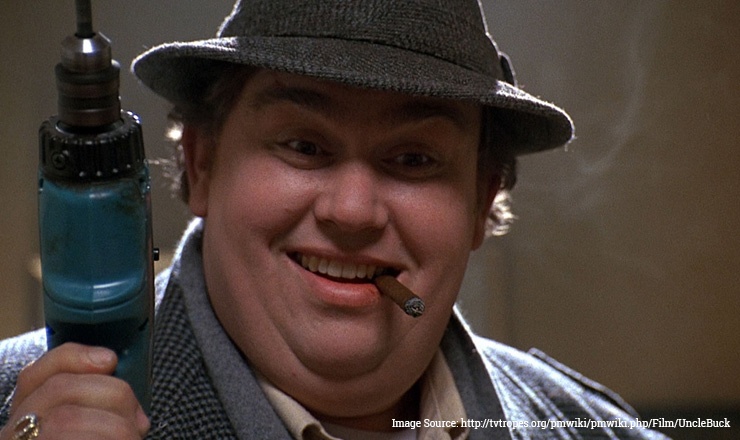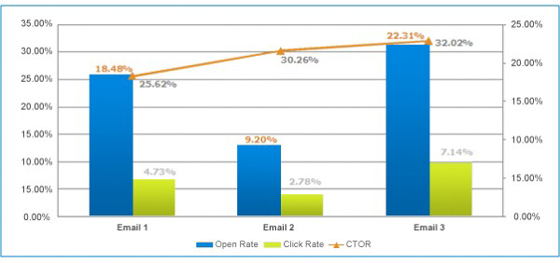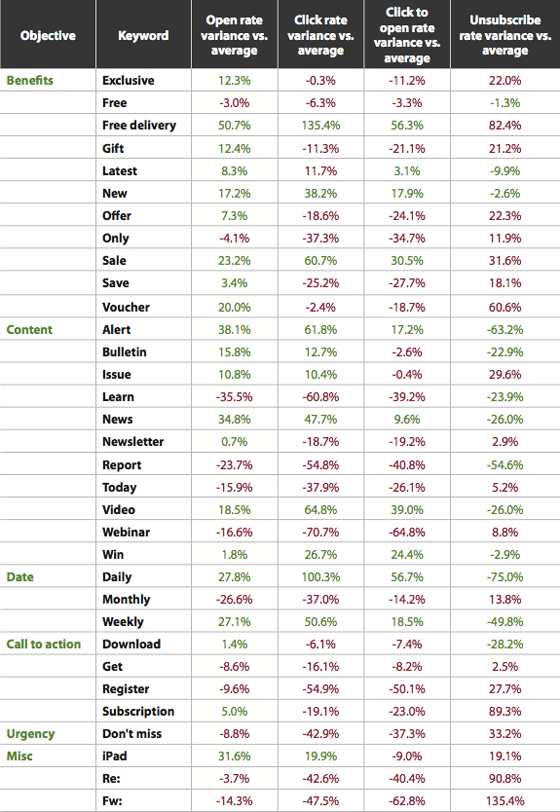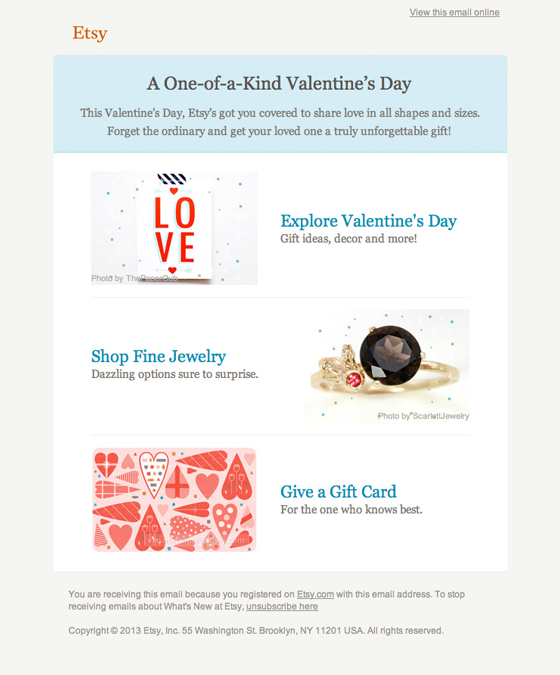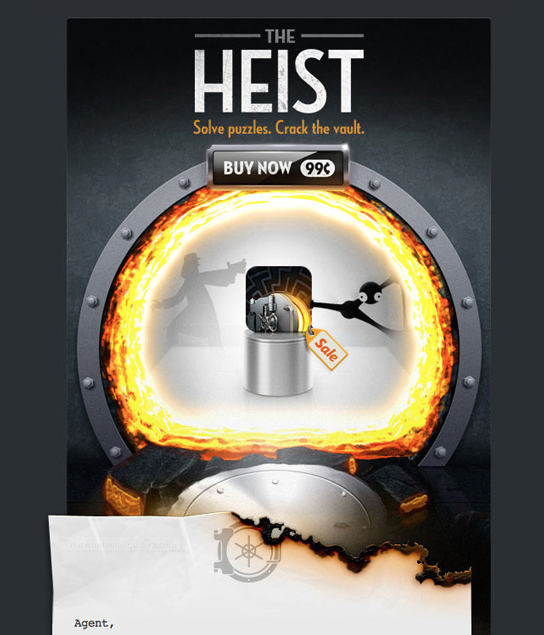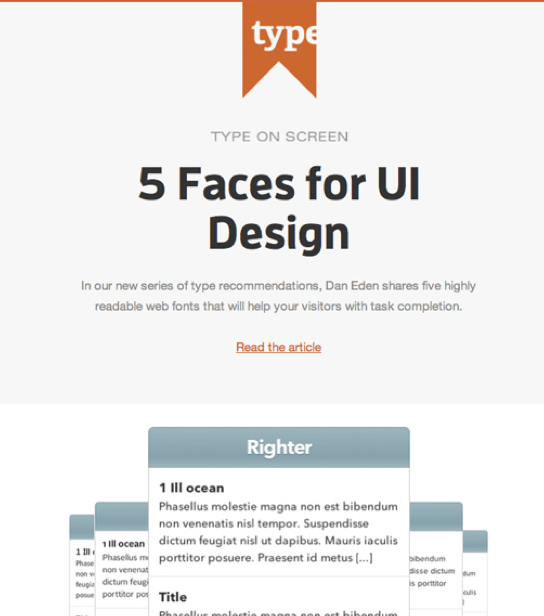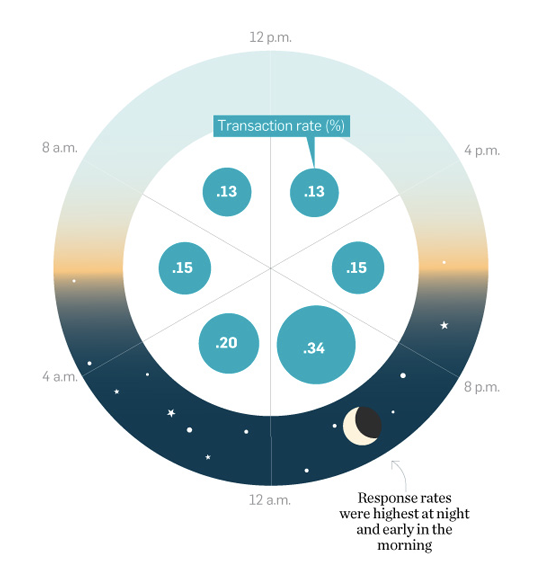5 Things Your Embarrassing Uncle Would Do If He Sent Marketing Emails


I originally wrote this article as a guest post on Unbounce, and I'm really excited to be able to share it with you here as well. Enjoy!
Everyone has a crazy uncle. He’s the one that keeps you guessing. You never know what he’s going to do and oftentimes, you and your family are more than a little embarrassed by his bizarre behavior. (By the way, if you can’t identify a crazy uncle in your family, it may be you. Ask someone you trust.)
As much as I would love to help you cope with your extended family, I think that there’s an even more embarrassing situation at hand. There seems to be an explosion of bad habits in marketing emails bombarding inboxes around the globe that would make any savvy marketer blush.
My guess is that some marketers are so desperate to get their email opened that they’ve turned to some embarrassing habits—they've forgotten what an effective marketing email is supposed to accomplish.
Getting your email opened isn’t the goal. Getting your reader to take action is.
That’s why it’s critical to track clicks rather than opens. A better metric to track at the email level is the click to open rate. That helps you see what’s really working with your email marketing. (Of course, an even better metric would be the actual revenue generated by such activity, but we’ll leave that for another discussion.)
In this chart from Marketing Land, we’re actually tracking three things:
- Open rate (the blue bar);
- Click rate (the green bar and the most important metric);
- Click to open rate (the orange line).
From the chart, you can see that while the third email had the highest click rate, the second email actually had a strong click to open rate. That means that the contents of the email, the copy and the call to action worked well together to get the user to take action.
So, what kind of embarrassing habits are keeping your reader’s finger from clicking? See if any of these sound familiar.
1. Making a promise in the subject line that the email doesn't keep.
It’s tempting to do whatever it takes to get your email opened. I mean, your reader can’t click if they don’t open, right? You’ve studied the charts, and you know what’s going to work. Maybe it’s just as simple as using words proven to lead to opens and clicks and you’ll have a winner.
I guess it’s time to try the old, “Alert: Fraudulent Activity Detected In Your Bank Account” subject line. That’ll get that email opened.
Well, hold on there, young buck.
In your eagerness to get your email opened, you’ve lost sight of the real goal: to get your reader to click. You don’t want your reader to feel duped into opening your email, unless you just love getting reported as spam and getting hateful email responses.
Of course, you’re not crazy enough to actually try that. But sometimes, we do allow our cleverness to get the best of us. And once our readers open, they are sorely disappointed in the content. They’re so uninspired, they don’t even have the motivation to click.
So, what’s a smart marketer to do?
I love how Mailchimp cuts through the clutter with this common sense advice:
“Your subject line should (drum roll please): Describe the subject of your email.”
Now that’s real genius.
2. Showing up garishly over-dressed.
Let’s revisit our goal: get a reader to click. It’s not to impress your reader, or wow them with animation.
Anything that gets in the way of a click is working against you.
Before you go to work creating graphics for your email, make sure the copy can deliver a click. Then, only use graphics that support that copy.
I think Lands’ End did a pretty nice job with this email that landed in my inbox. They have chosen a singular topic and their goal is to get me to explore more about their shirts. Nice.
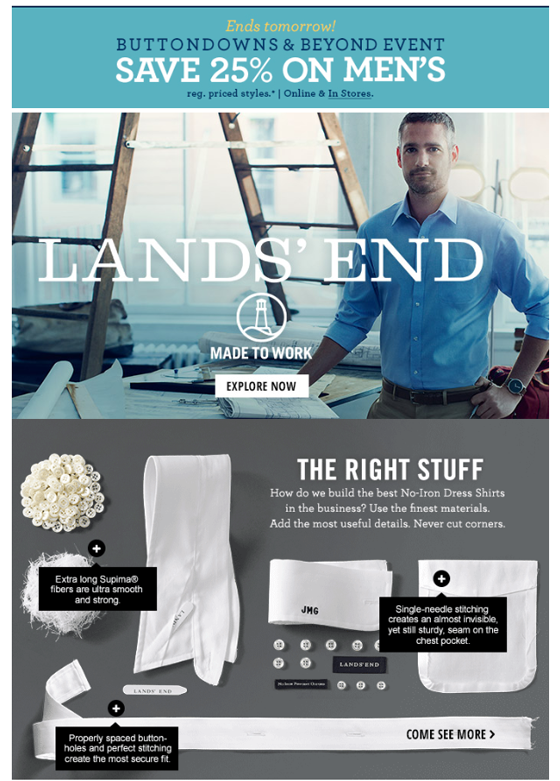
The subject line for this email, “Made to Work dress shirts + 25% off Men’s” delivered exactly what it promised.
Use images wisely and don’t get all crazy with them. About half of your users are looking at your email on a mobile device now, so make sure that your email masterpiece works well everywhere. Make your design only as complicated as it needs to be to accomplish your goal.
Some of the most effective marketing emails out there are drop-dead simple. (I personally think that the fancy email marketing templates provided by email marketing companies are really a part of some grand conspiracy.) For instance, some marketers have discovered that using an HTML email that looks like a plain text email performs well. By using an HTML email, you still are able to track the metrics that you need. And by sending a plain-looking email, you’re able to communicate personally in a personal space: your reader’s inbox.
Here’s one email that I’ve sent to my users that appears to be a plain text email, but is actually just simple HTML, allowing me to track opens and clicks.
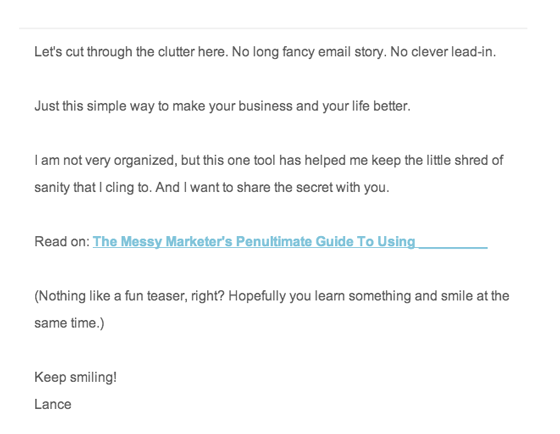
3. Going off on rabbit trails.
This bad habit appears to be an epidemic in marketing emails. Instead of doing the hard work it takes to choose just a few important morsels, some hapless marketers throw as many things as possible against the wall just to see what will click. Please stop the madness.
Based on studies of human cognitive function, you don’t want to provide more than three or four options in any one email. Too many choices can sink your chances of your reader taking action. You may actually see an increase in clicks if you can compress that down into one singular topic for your email.
Take a look at what Wistia does with this email.
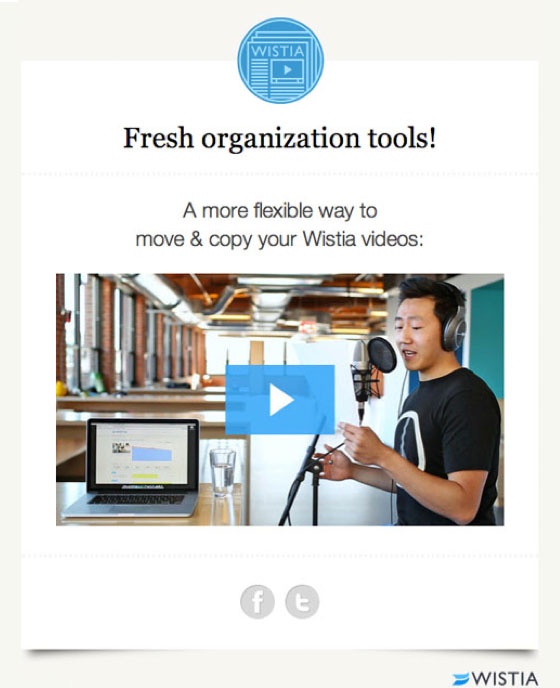
Subject line: “A new way to organize your Wistia account.”
Etsy gets it with this promotional email. Three choices. Not 70.
But what if you have more to say than three things? Send a separate email to a segmented list. That way you’re talking about the right things to the right readers.
4. Giving away the punch line.
You’ve worked hard at crafting the perfect subject line and you’ve got your reader engaged. So far, so good. Now, remember that the point of your email is to get the reader to click through to your site. It’s not your email’s job to deliver the goods. It just points to where the goods are.
That’s where intrigue comes in. Develop your reader’s curiosity. This email from The Heist does a great job of this. By the time you’ve made it to the link, you’re ready to go.
While the Typecast email below doesn’t necessarily create a compelling story, the combined effect of beautiful layout, clear copy and interesting images make it awfully tempting to click that orange button at the bottom. Am I right?
5. Showing up in the right place but at the wrong time.
Hopefully your email is landing in the right place (your reader’s inbox!), but maybe it just isn’t showing up at the right time. Make sure that you’re experimenting with different times/days for your emails. What has worked for others may or may not work for you. For instance, one study showed that response rates are much higher after 8 p.m.
Don’t think you have to follow the crowd. In fact, if fewer companies are sending emails on Sunday at 7:30 a.m., give it a shot and see what kind of push you can get if you do it in an off time.
If your readers are opening and not clicking, it may be that they’re too busy at the moment to click on through. Try sending at times when your readers may have a little more time.
While we’re talking about time, think about your reader’s time. They may love your content and love your site, but they just don’t have time to read right now.
You may be able to increase their willingness to click if you give them an estimate of the time it’ll take them to read. I love how Medium does this with their articles.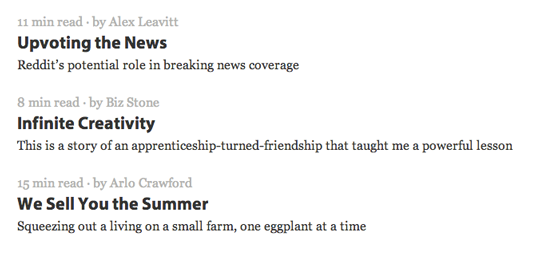
Let’s sum it up.
The only way to change a bad habit is to replace it with a good one. So, make it a habit to ask yourself the following questions for each marketing email that you send.
- Does my subject line match the content of the email?
- Is my email design as simple as possible to accomplish my goal?
- Am I helping my reader stay focused on a maximum of three or four options?
- Does my email copy build curiosity to click?
- When is the best time for my marketing emails? When will my readers be most likely to respond?
In no time, you’ll be proud of your emails’ behavior. No more awkwardness. No more justifying your red face.
Now, if only it were this simple to deal with your embarrassing uncle.

